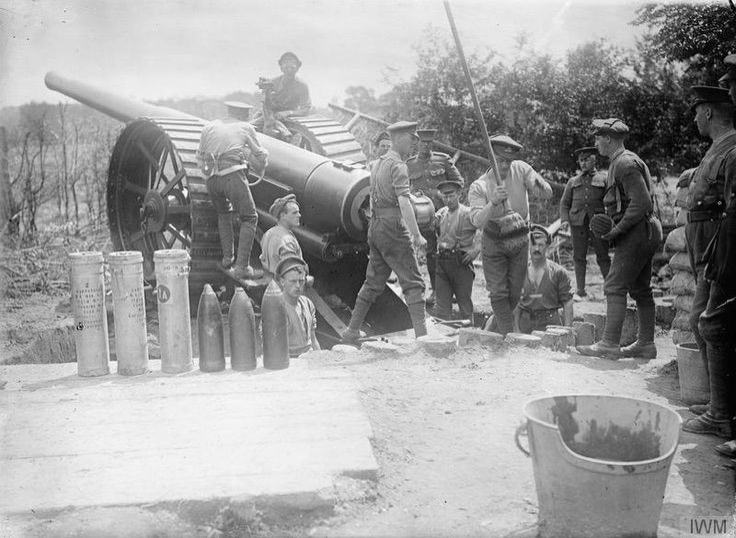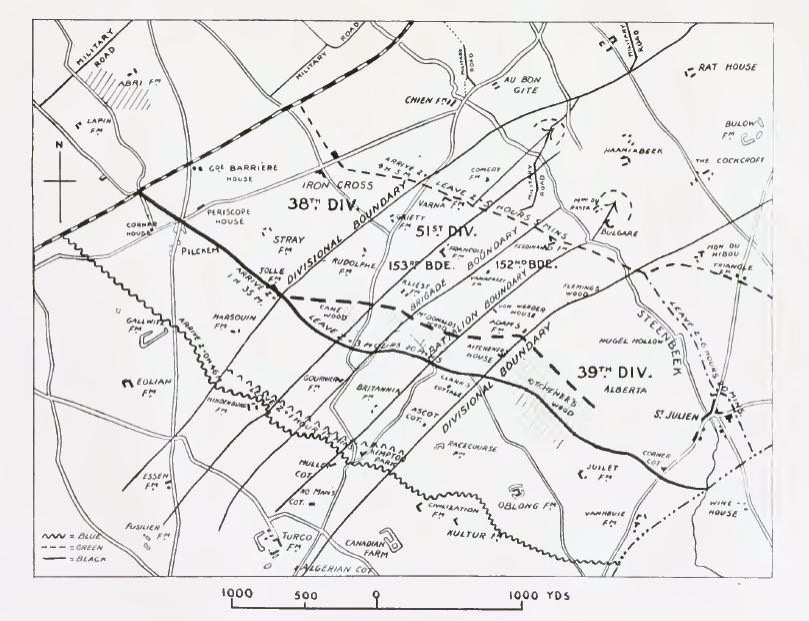214 Siege Battery RGA (Royal Garrison Artillery)
Siege Batteries RGA were equipped with heavy howitzers that fired large calibre high explosive shells in high trajectory.
The usual armaments were 6 inch, 8 inch and 9.2 inch howitzers, although some had huge railway- or road-mounted 12 inch howitzers.(source: www.longlongtrail.co.uk)
On the Great War Forum a "Sergeant TerryA" posted the following about 214 Siege Battery, of which Jack was 2nd in Command :
“The unit sailed from Bristol according to the diary (although other records say Southampton) to Le Havre on deployment in late January 1917 and was then initially billeted to camp then transferred to serve around Ypres from March. It was a four gun battery at this time. Initial deployment was recorded as slow as the ground conditions were very hard due to frost and cold conditions and the gun emplacements took more time than expected to prepare.
They had a very busy few months, notably on 3rd July they sustained a very heavy counter battery bombardment (estimated to be 1500 rounds) with all of the battery's guns being damaged and subsequently removed to workshops for repair. Only 4 gunners were killed that day. The next day the battery was made up from 4 to 6 guns but the unit was temporarily moved to relieve another Siege Battery for some days as their original guns were out of service - before returning to their position outside Elverdinge and taking charge of the 6 guns - 8" Mk VII Howitzers of the new battery entitlement. .
They sustained a second severe shelling with gas shells on the 12/13th July that resulted in 57 being hospitalised initially, subsequently 119, of which 15 were serious cases with unfortunately 5 dying from the effects of the gas over the next two weeks whilst in hospital.
During this period the battery was firing around 250 - sometimes over 600 rounds per day most aimed to the north and west of St Julien.
My wife’s grandfather - 2Lt J Phemister was wounded at 1958 hours on the 24th July in the left arm with another gunner being killed during the received counter battery fire - a wound which ended his war service as the arm was severely damaged although fortunately he survived.”
Forward Observation Officers
The Battle of Pilckem Ridge
Jack was killed at about 8am on 31st July, which was the morning the Battle of Pilckem Ridge and the wider Battle of Passchendaele (Third Battle of Ypres) commenced.
He was attached at the time to 90 Heavy Artillery Group during the operation of the XIX Corps, acting as a Forward Observation officer.
“The attack began at 3:50 a.m., which was intended to coincide with dawn but low cloud meant that it was still dark. The main British effort was made by II Corps across the Ghelveult Plateau, on the southern flank of the Fifth Army. II Corps had the most difficult task, advancing against the principal German defensive concentration of artillery, ground-holding and Eingreif divisions. The 17th Brigade on the right of 24th Division reached its objective 1,000 yards (910 m) east of Klein Zillebeke. The 73rd Brigade in the centre was stopped by German pillboxes at Lower Star Post and 72nd Brigade on the left reached the Bassevillebeek but then had to withdraw to a line south from Bodmin Copse, a few hundred yards short of the blue line (first objective).”
The 30th Division with an attached brigade of the 18th Division, had to advance across the Gheluvelt plateau to Glencorse Wood. The 21st Brigade on the right lost the barrage as it crossed the wreckage of Sanctuary Wood and took until 6:00 a.m. to capture Stirling Castle Ridge. Attempts to advance further were stopped by German machine-gun fire. The 90th Brigade to the left was stopped on the first objective. German artillery fire fell on Sanctuary Wood and Chateau Wood from 5:00 a.m. and succeeded in stopping the advance, except for a short move forward of about 300 yards (270 m) south of Westhoek. In the dark an 8th Division battalion had veered left into Château Wood and reported mistakenly that it had captured Glencorse Wood. The attached 53rd Brigade of 18th Division moved forward into ground that both divisions believed to be clear of German defenders. It was not until 9:00 a.m. that the mistake became known to the divisional commanders and the 53rd Brigade spent the rest of the day attacking an area that 30th Division had been intended to clear. The 30th Division and 24th Division failed to advance far due to the boggy ground, loss of direction in the dark and because much of the German machine-gun defence on this section of the front remained intact.
(source: Wikipedia)
The official War Diary records (in pencil) that 214 Siege Battery fired 398 rounds at 3.50am on the morning of 31st July.


